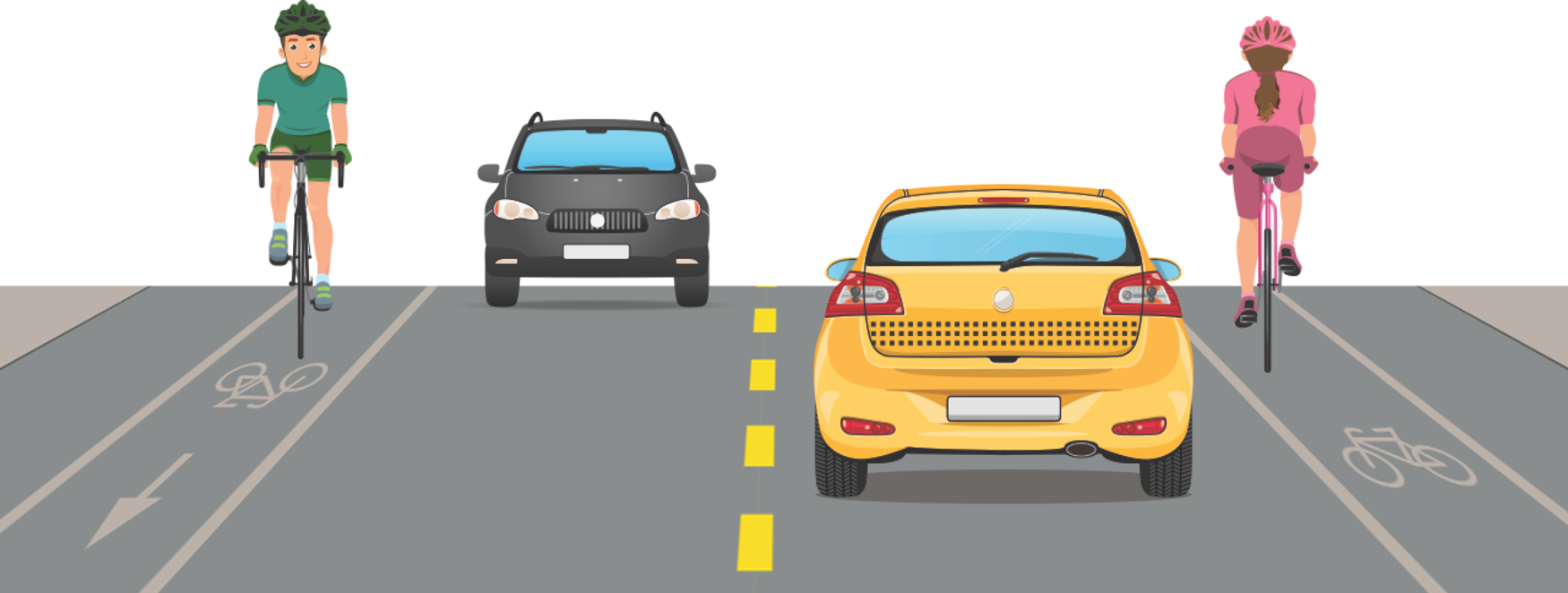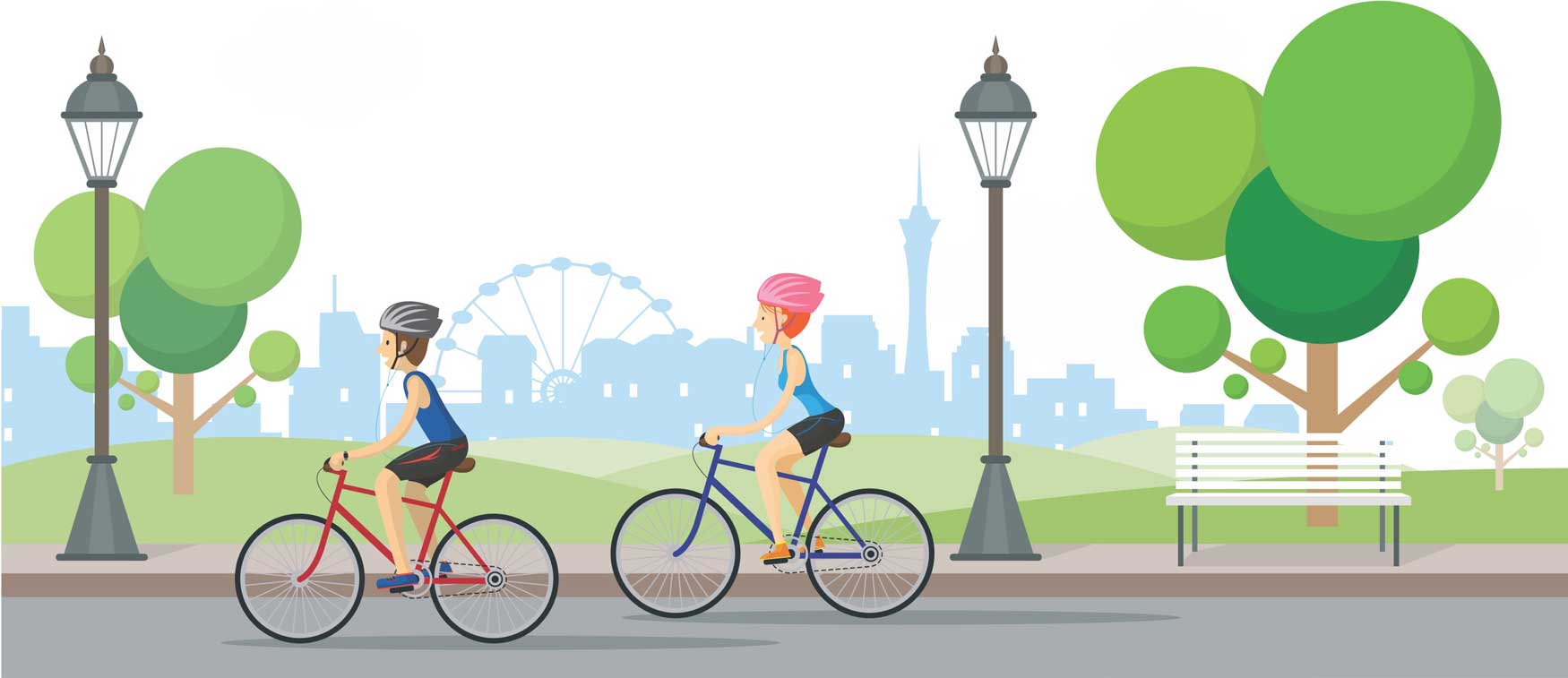As more people ride bicycles for everyday commuting, recreation, and exercise, demand for safer infrastructure is on the rise. Here are some of the ways Clark County is working to make biking easier, safer, and more enjoyable for the community.

There are over 550 miles of bicycle lanes in Clark County, with significant expansion planned in next few years. Watch this video and download the RTC Bike Map Brochure to learn more.

The number of people riding bikes in Southern Nevada has increased substantially. As bike riders take to the streets there is also an increased need to be more aware and careful out on the road. Be sure to follow the rules of the road to stay safe while riding.
Check your Bike. Before riding make sure your tires are inflated and your brakes are working properly. Inspect your chain & gears and look for anything loose or falling off. Learn how to adjust your bike to fit your height here.
Wear your helmet. Wearing a bike helmet is one of the best ways to protect your head from injury. Wearing a helmet can be the difference between a serious injury and a minor one. Bike helmets are not just for kids. Adults should wear bike helmets too. Parents can be an example to their kids by wearing their helmets when they ride. It is important to have your helmet fit properly. Watch this video to learn more about helmet fitting.
Start slow. If you haven’t been on a bike since you were young, try a short ride around the neighborhood to start. Gradually build up your distance and your comfort level.
Bike with flow. Travel on the road in the same direction as traffic. Use bike lanes and paths when they are available. Avoid sidewalk riding because drivers don’t look for bike traffic on sidewalks. When passing pedestrians, announce “passing on your left” so they know you are coming.
Be visible. Wear reflective material or bright clothing and attach lights to your bike for night rides. Do whatever you can to make sure drivers can see you.
Follow traffic signals. Obey street signs, signals and road markings. Stop at red lights and stop signs and obey traffic rules just like you would in a car. Don’t make sudden turns or weave in and out of traffic. Remember vehicles you must pass with at least 3 feet of clearance between the car and cyclists. Learn more about traffic rules.
Use bike signals for turning. Be predictable to drivers and indicate your intent. Signal using your left arm so you can keep your right hand on your handlebars at all times.
Ride to work. Start by biking to work a few times a week and increase the number of days over time. You don’t have to stop driving completely. Biking to work gives you an alternative method of transportation, and it’s good for your health and the health of the planet!
Stay safe. The route you drive to your destination isn’t always the best for biking. Often, the better bike route is slightly longer, but significantly safer. Consider distance, traffic volume, road width, condition, and terrain when selecting a route.
Do a test-run. Try out a new route on the weekend, when there’s less traffic on the roads.
Know a few fixes. Carry bike-specific tools so you can fix a flat tire or tighten a loose brake cable on the fly. Bring a spare tube and a small air pump for emergencies.
Bike instead of drive for short trips: If you work in the downtown Las Vegas area, take advantage of the RTC Bike Share program and leave your car parked for lunch or other errands. Miles of bike lanes have been added to the downtown area for your safety and convenience. The free Ride RTC app will help you search for available bikes and or you can use the kiosk at any of the bike stations and you’ll be on your way.
Report roads the need maintenance: Did you notice a trail or road that needs maintenance? Click here to submit a road maintenance request.
Bikes ride free. All RTC vehicles are equipped with a bicycle rack that can accommodate 2-3 bikes. There is no additional cost to bring a bike. The RTC also has great step by step instructions on how to use the bicycle racks on all RTC vehicles.
Manage your ride. Learn how to use the online Transit Trip Planner to map your bus route in advance. Utilize the new RTC Ride Tracker to help you locate the nearest bus stop and upcoming arrival times.